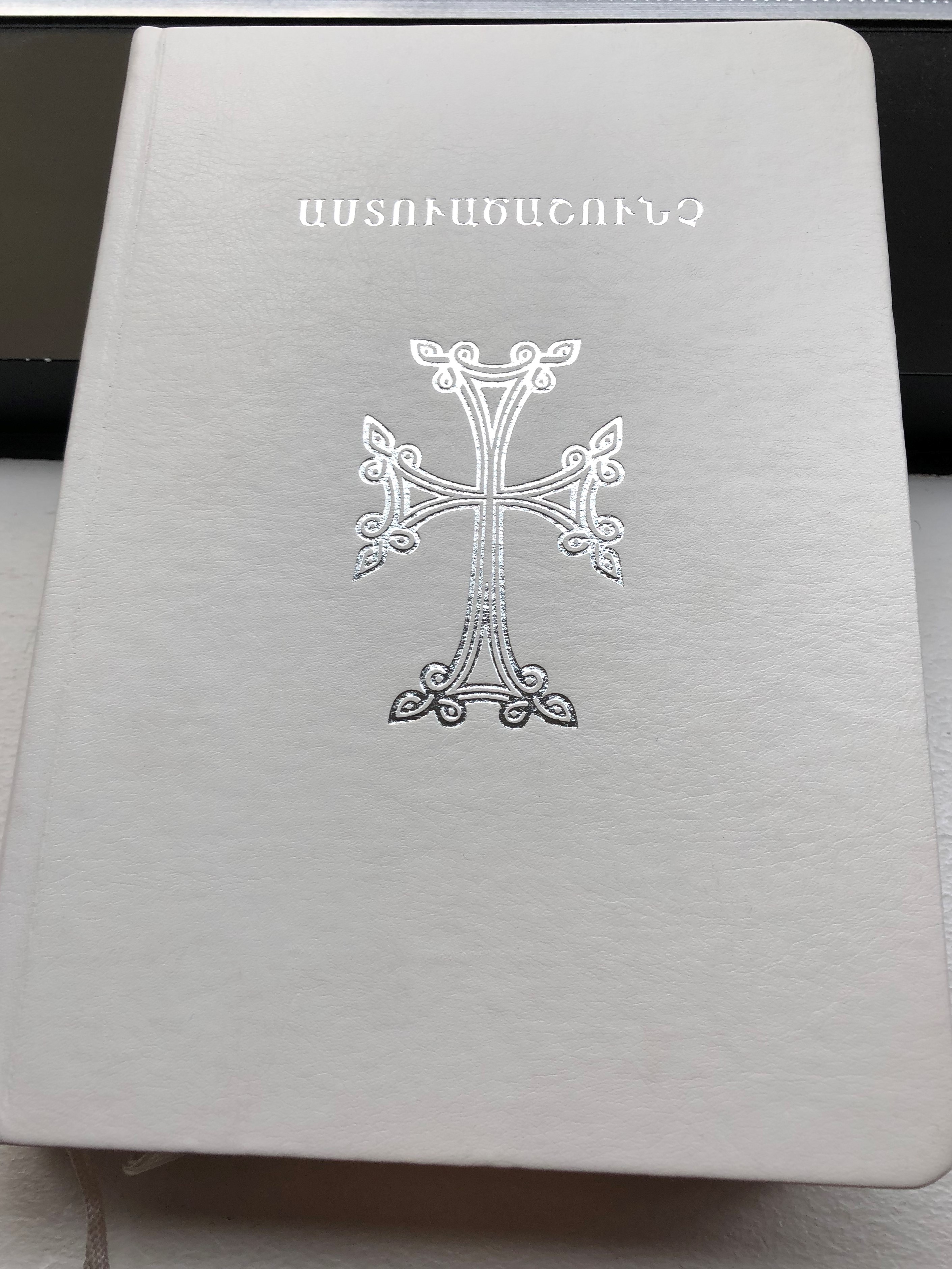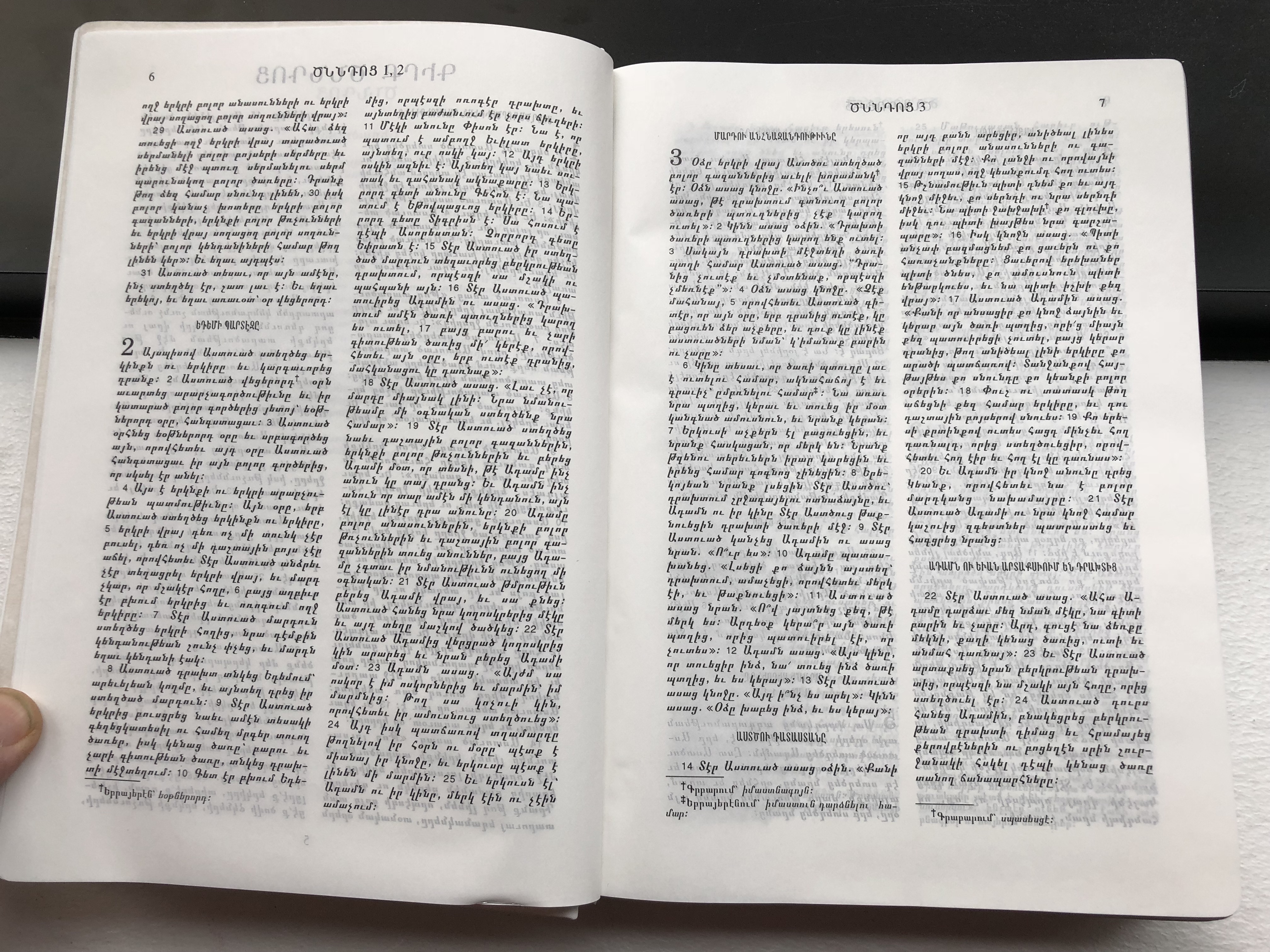Description
Eastern Armenian Holy Bible - New Translation / Bible Society of Armenia 2013
White Imitation leather - Silver page edges / E73HGb2W
Armenian Ararat language Holy Bible / Աստվածաշունչ / Holy Bible for Wedding (Etchmiadzin translation)
Product Features
- Language: Eastern Armenian - Ararat
- Binding: White Imitation Leather
- Page Edges: Silver
- Translation: Etchmiadzin (2013)
- Pages: 1697
- Publisher: Bible Society of Armenia
- Dimensions: [Please provide dimensions]
Overview
The Eastern Armenian Holy Bible is a modern translation published by the Bible Society of Armenia in 2013. This edition, bound in elegant white imitation leather with silver page edges, is based on the Etchmiadzin translation. Eastern Armenian, one of the two standardized forms of Modern Armenian, is predominantly spoken in Armenia, Artsakh, Russia, Georgia, and by the Armenian community in Iran. This Bible is ideal for weddings and special occasions, offering a comprehensive and accessible rendition of the Holy Scriptures in the Ararat dialect.
Overview (Armenian)
Արևելահայ Աստվածաշունչ նոր թարգմանությունը հրատարակվել է Հայաստանի Աստվածաշնչային Ընկերության կողմից 2013 թ. Այս հրատարակությունը, որը կազմված է սպիտակ կաշվե իմիտացիայով և արծաթագույն էջերով, հիմնված է Էջմիածնի թարգմանության վրա: Արևելահայերենը, որը մոդերն հայերենի երկու ստանդարտացված ձևերից մեկն է, հիմնականում խոսվում է Հայաստանում, Արցախում, Ռուսաստանում, Վրաստանում և Իրանի հայ համայնքի կողմից: Այս Աստվածաշունչը հիանալի է հարսանիքների և հատուկ առիթների համար, առաջարկելով ամբողջական և մատչելի բնագրի հայերեն թարգմանությունը Արարատյան բարբառով:
Interesting Facts
- Eastern Armenian Language: Spoken in Armenia, Artsakh, Russia, Georgia, and by the Armenian community in Iran.
- Cultural Significance: Armenia was the first country to establish Christianity as its state religion in 301 A.D.
- Historical Translation: The Bible was first translated into Armenian (Grabar) by Mesrop Mashtots, who invented the Armenian alphabet.
- Modern Need: The necessity for a Bible in Eastern Armenian was identified in the 1990s due to difficulties with Western Armenian.
- Publication: The first printed Armenian Bible edition was produced in Amsterdam in the 1660s.
Publishers
- Publisher: Bible Society of Armenia
- ISBN-13: 9789994175185
- ISBN-10: 9994175181
Hashtags
#EasternArmenianBible #HolyBible #BibleSocietyofArmenia #EtchmiadzinTranslation #ArmenianBible #WeddingBible #AraratDialect #ArmenianChristianity #ModernTranslation #WhiteLeatherBible





















































![Eastern Armenian New Testament [Hardcover] by The Bible Society of Armenia Eastern Armenian New Testament [Hardcover] by The Bible Society of Armenia](https://cdn11.bigcommerce.com/s-62bdpkt7pb/images/stencil/600x600/products/830/2651/1__36944.1462823171.JPG?c=2)








![Armenian Bible Handbook - Armenian Religious book [Hardcover] by Bible Society Armenian Bible Handbook - Armenian Religious book [Hardcover] by Bible Society](https://cdn11.bigcommerce.com/s-62bdpkt7pb/images/stencil/600x600/products/232/511/1__62068.1462823112.JPG?c=2)

